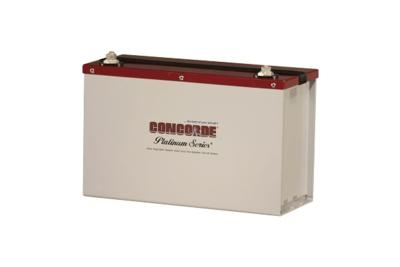Mon, Aug 26, 2013
Single, Dual Lead Acid Cells Approved For B, BA, B1, B2 & B3 Models
EASA has given ESTC approval to Airlift AS of Norway allowing for single and dual battery installations of Concorde’s Sealed Lead Acid RG-350 or RG-355 battery on Eurocopter AS350B, -BA, -B1, -B2 and B3 models. The ESTC is now available through Concorde Battery Corporation’s worldwide network of distributors.

Many cold weather and high cyclic operators have requested a Lead Acid option for use in Europe and Airlift has fulfilled this request with Concorde batteries. For conversions on a single battery installation ESTC 10044362 replaces the main 15 Ah nickel-cadmium battery with either the Concorde RG-350 or the RG-355 17 Ah Lead Acid batteries. If the aircraft has been modified with Eurocopter Service Bulletin 24.00.01 (starting in very cold weather) Airlift’s ESTC allows for the replacement of both Nickel-Cadmium batteries with Concorde RG-350 batteries.
RG-350 and RG-355 are TSO authorized and as such, have passed rigorous TSO C-173 testing for duty cycle, electrical performance, temperature extremes, shock/vibration and environmental requirements. Concorde’s valve regulated lead acid (VRLA) recombinant gas (RG) absorbed glass mat (AGM) technology has been proven as reliable, durable and safe for over 30 years. Superior performance can be attributed to unique design features such as proprietary PolyGuard separators (an additional layer of protection against shorting, unique to Concorde) robust plate construction, over the cell wall intercell connections for reduced internal resistance and a commitment to quality standards.
The advantages of converting from nickel-cadmium to Concorde’s RG Series batteries include lower cost of acquisition, zero maintenance and reduced battery costs per flight hour. Concorde batteries do not require deep cycling to remove the “memory effects” seen in nickel-cadmium batteries, do not require water or electrolyte replenishment and have no risk of thermal runaway. With the benefit of RG Series batteries shipping Hazmat Exempt, transportation is more cost effective regardless of whether shipping by land, sea or air.
More News
Aero Linx: Model Aeronautical Association of Australia MAAA clubs are about fun flying, camaraderie and community. For over 75 years, the MAAA has been Australia’s largest fl>[...]
Touchdown Zone Lighting Two rows of transverse light bars located symmetrically about the runway centerline normally at 100 foot intervals. The basic system extends 3,000 feet alon>[...]
“Discovery and innovation are central to our mission at Virgin Galactic. We’re excited to build on our successful record of facilitating scientific experiments in subor>[...]
How To Get A Story On Aero-TV News/Feature Programming How do I submit a story idea or lead to Aero-TV? If you would like to submit a story idea or lead, please contact Jim Campbel>[...]
Student Pilot Reported That During Rotation, “All Of A Sudden The Back Of The Plane Kicked To The Right..." Analysis: The student pilot reported that during rotation, “>[...]
 ANN's Daily Aero-Linx (05.02.24)
ANN's Daily Aero-Linx (05.02.24) ANN's Daily Aero-Term (05.02.24): Touchdown Zone Lighting
ANN's Daily Aero-Term (05.02.24): Touchdown Zone Lighting Aero-News: Quote of the Day (05.02.24)
Aero-News: Quote of the Day (05.02.24) ANN FAQ: Contributing To Aero-TV
ANN FAQ: Contributing To Aero-TV NTSB Final Report: Cirrus Design Corp SR20
NTSB Final Report: Cirrus Design Corp SR20



